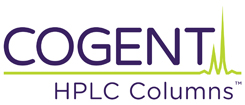Phospholipids present a challenge for chromatographers for various reasons.
Here some points to consider with suggested solutions.
- They have negligible UV absorption and generally require other detection methods.
- Subtle structural differences among phospholipids often lead to poor selectivity or co-elution.
- For detection, refractive index (RI), charged aerosol detection (CAD), ELSD (Evaporative Light Scattering Detection), or other “universal detectors” are recommended.
- As for the separation, Organic Normal Phase (ONP) using non polar solvents and a Cogent Silica-C™ column has been observed to produce excellent resolution.
Normal Phase ONP is also considered the most suitable separation mode due to the solubility of phospholipids in non polar solvents like chloroform. These compounds are not water-soluble and therefore they may not be suited to Aqueous Normal Phase ANP methods on this basis. On the other hand, if they have ionized / ionizable groups they are amenable to ANP retention then in this case, the Cogent Diamond Hydride™ column would be best to use.


